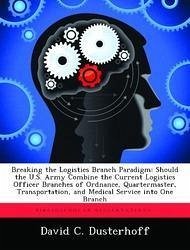As the United States Army transforms into a strategically responsive, lighter force, it will have the capability to conduct full spectrum operations anywhere in the world. Its highly lethal, deployable, and mobile units will be prepared for any challenge they might face on the future battlefield, known as the Contemporary Operating Environment. Combat Service Support (CSS) organizations are responsible for sustaining the combat forces as they meet these future challenges. Logistics officers will need to plan, manage, and direct the execution of CSS functions for the force commander. In order for future operations to be successful, the functions of maintenance, supply, transportation, combat health support, and field services must be well integrated and synchronized to reduce the logistics footprint without sacrificing combat power. This incredibly demanding set of requirements calls for talented logisticians who have had formal multifunctional training from the time they enter the military. This monograph asks if the U.S. Army should combine the current logistics officer branches from the Ordnance, Quartermaster, Transportation, and Medical Service Corps, into one branch. Currently, officers in the existing logistics branches, and those MSC officers who volunteer to become multifunctional logisticians, do not formally receive multifunctional training until the third phase of the Combined Logistics Captains Career Course (CLC3). This monograph examines how these officers are trained today, what their responsibilities are in supporting current CSS doctrine, and what their roles will be in participating in future operations. The author is able to draw conclusions and make logical recommendations in researching these three areas by applying the following criteria: Officer versatility, support of current doctrine, support of future operations, and simplicity in training and assignments. This monograph concludes that the U.S. Army should combine the Ordnance, Quartermast








